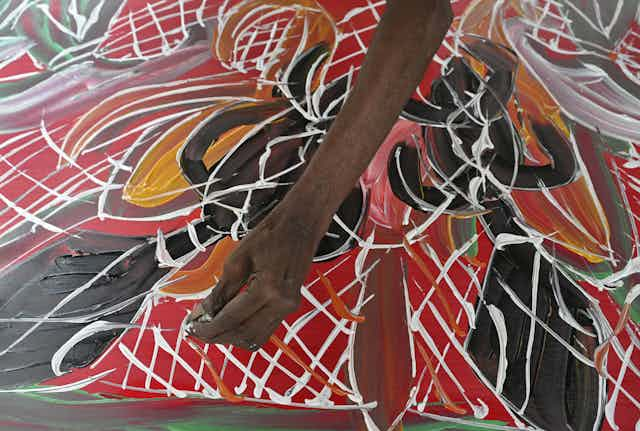Co-design is the new buzz word being applied to relationships between Indigenous and non-Indigenous peoples.
It has been used as a key part of the Indigenous Voice process. But it is also talked about when it comes to health policy and infrastructure design.
Even fashion brand Country Road has talked about co-design in its work with Ngen’giwumirri artist, Kieren Karritpul to develop a homewares range.
Co-design is also increasingly used in education circles.
Educational policies are emphasising the importance of schools and Indigenous peoples and communities working together in improving educational outcomes for Indigenous peoples.
But what does it mean and does it stand up to the hype? Our research has identified three clear ways we can improve co-design.
Read more: 10 questions about the Voice to Parliament - answered by the experts
What is co-design?
Co-design is open to interpretation and can mean something different to each person who comes to process.
It originally comes from academic work on participatory principles and public sector innovation. It is generally understood to be a process that gives marginalised people a say on policy or programs that affect them.
But it is more than a consultation process. It is supposed to improve outcomes through collaborative relationships.
It is not without risks. So far, there is not a lot evidence around what effective co-design looks like in Indigenous settings and how it works in practice, without reinforcing existing power imbalances.
It may also see Indigenous peoples blamed if a program fails.
Our research on co-design
So it is a critical time to explore how co-design is defined and by whom and its potential to shift outcomes.
We are looking at co-design in Indigenous education policy and practice across three domains: conceptualisation (how we define it), process (how we do it) and evaluation (how we measure its success).
Our ongoing research includes case studies of primary and secondary schools and a review of existing research on co-design in education. We will also conduct a survey later this year.
Our work so far has shown us there are three clear opportunities to improve how co-design works.
1. What is the problem?
A crucial issue in co-design is the identification of problems and who does this.
If governments or schools have already decided what the problem is and then they seek Indigenous people to co-design a solution, this is not a co-designed process.
We have heard examples of schools doing “co-design”, which is really the school presenting the community with a range of solutions and asking for their help to implement them.
The priorities of the community may well be different to the priorities of the school. For the community, the priorities might be addressing transport barriers so students can attend school more easily. For the school, it may be improving literacy and numeracy outcomes.
These examples show why it is important Indigenous people are part of identifying problems and priorities. Building Indigenous peoples and communities’ strengths means deep listening before the process even begins.
2. Who really has the power?
Addressing power imbalances is an obvious ingredient to good co-design. However, governments and schools are hierarchical places that have typically not enabled Indigenous leadership in their structures.
This means good co-design builds in genuine collaboration and power sharing dynamics.
One principal we spoke to talked of the need for “distributive leadership”. This means “everybody having a voice and respecting that voice as well”.
Another Aboriginal community liaison officer told us how at their school, they
have an Aboriginal person that sits down and makes decisions with the principal […] including Elders […] basically empowering the community to have a say.
3. How involved are Indigenous peoples?
Our research so far has shown us how different people’s expectations and ideas can be about the co-design process.
Indigenous people are telling us there is an expectation mob are part of the process from the problem location to the evaluation of it’s success.
But in our systematic literature review of 15 papers on co-design in Indigenous education, only six showed evidence of Indigenous engagement from the early design phase and on.
We have also seen the importance of understanding and respecting Indigenous protocols and leadership throughout. This includes understanding traditional owners in the process.
Where co-design could take us
Co-design can encompass many ideas – already advocated over past decades – such as strengthening school and community relationships and giving Indigenous people a greater say in how schools serve their families and communities.
Our research is focused on consolidating the limited research we already have on co-design in Indigenous education and generating new, Indigenous and evidence-based understandings of co-design in schools.
The next key step is evaluation, to look at whether whether co-design is effective and to make the most of its potential to transform outcomes in education.
Read more: What did the public say about the government’s Indigenous Voice co-design process?

